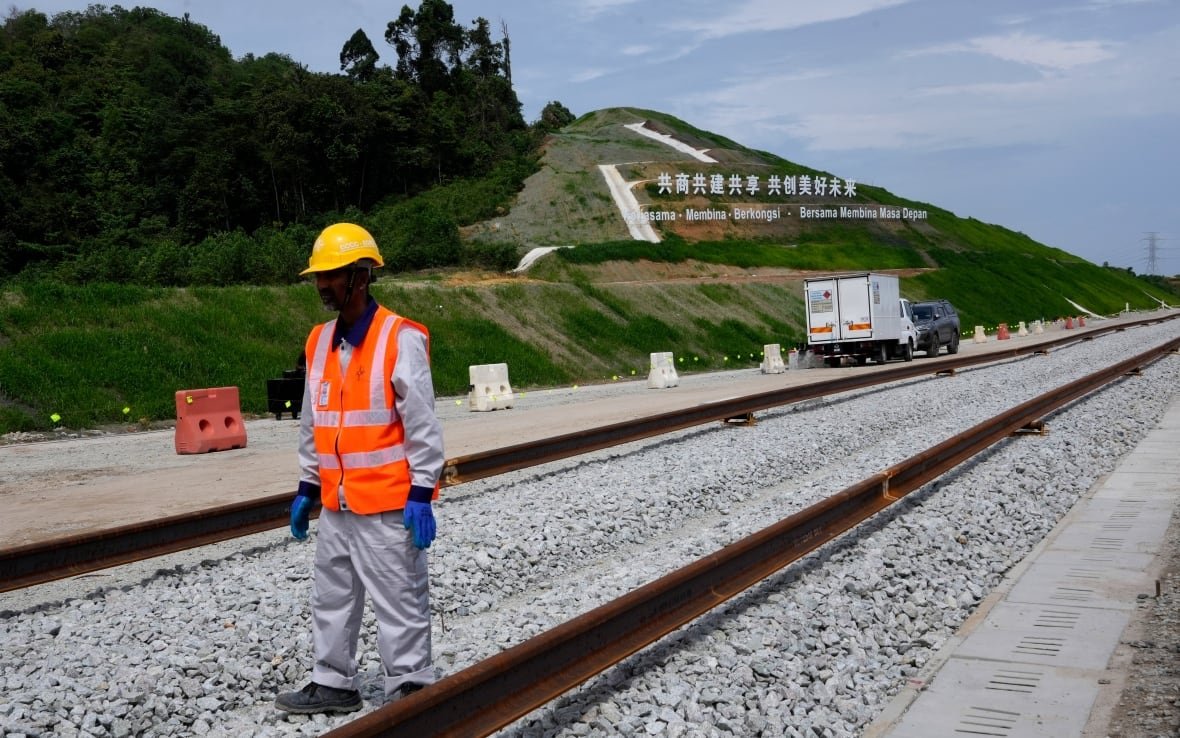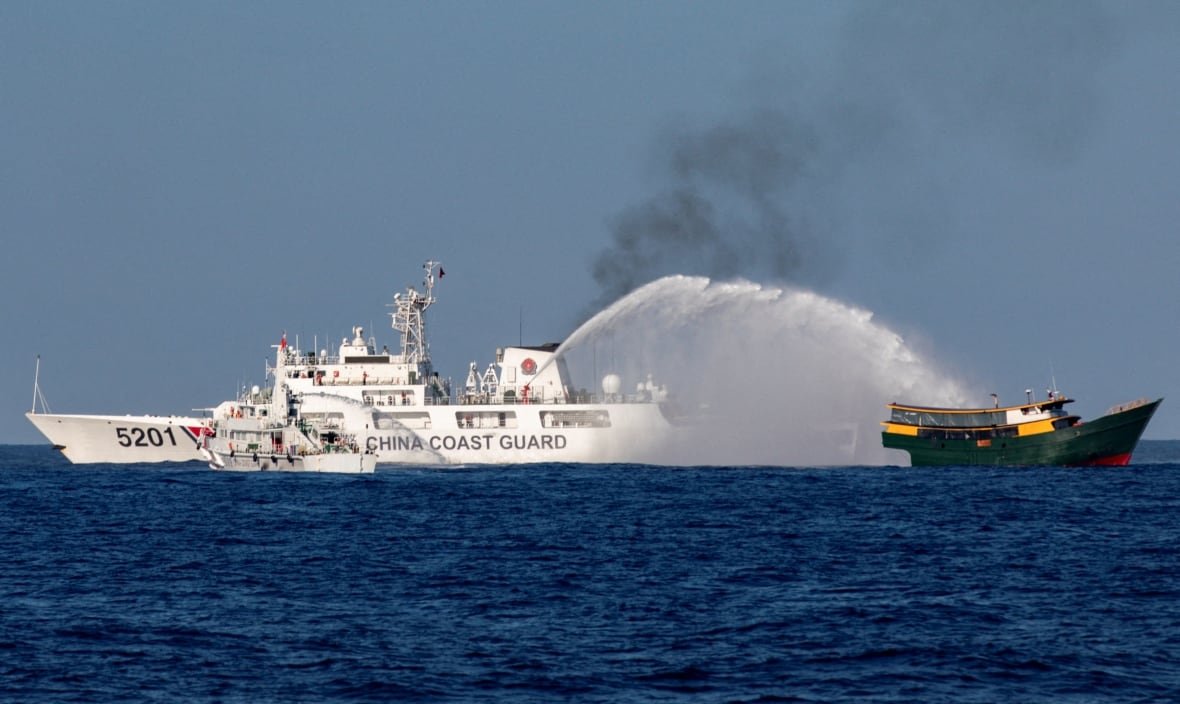The timing couldn’t be better for Chinese President Xi Jinping as he wraps up a tour of three countries in Southeast Asia amid growing tariff pressure from U.S. President Donald Trump.
“It’s a very smart move,” said Gil Lan, an associate professor in the law and business department at the Ted Rogers School of Management at Toronto Metropolitan University.
Xi’s five-day visit to Vietnam, Malaysia and Cambodia has been an effort to shore up allies and support within the region and present Beijing as a stable, reliable partner in the wake of sweeping tariffs announced by Trump earlier this month on countries around the world — including particularly high levies on the places in Southeast Asia that were on the Chinese leader’s itinerary.
“It’s a great opportunity for China to position itself at the helm of the world trading order. And that was an opportunity granted to it by the States,” Lan said.
The Chinese leader last visited Cambodia nine years ago and Malaysia 12 years ago.
On April 2, Trump announced 46 per cent “reciprocal” tariffs on Vietnam, 24 per cent on Malaysia and 49 per cent on Cambodia — although in an about-face, the U.S. president paused the rate at 10 per cent for 90 days.
China, the sole outlier, is facing 145 per cent tariffs from the United States.

Upholding the global free-trade system
In Hanoi on Monday, his first stop, Xi was greeted by Vietnamese President Luong Cuong with a special ceremony. According to a statement from China’s Ministry of Foreign Affairs, the Chinese president said the two countries would “strengthen strategic resolve, jointly oppose unilateral bullying acts, uphold the global free trade system and keep global industrial and supply chains stable.”
“He’s received the highest level of VIP welcome that they could afford to anyone,” said Ben Bland, director of the Asia-Pacific program at Chatham House, a London-based think tank.
For Bland, the timing is “quite handy” as the U.S. looks “very unilateral, coercive, even.”
China and Vietnam expressed their support for maintaining a multilateral trade regime centred around the World Trade Organization, in a joint statement issued on Tuesday at the end of a two-day visit by Chinese President Xi Jinping.
“Xi Jinping can present a face of China as reliable, dependable, and open and honest in its dialogue with its partners, despite its own track record of coercive behaviour towards Southeast Asia, ironically,” he said.
At his second stop, Xi and Malaysian Prime Minister Anwar Ibrahim, this year’s chair of the Association of Southeast Asian Nations (ASEAN), were expected to discuss a free-trade agreement between China and the 10-member group, according to reports.
Xi’s last stop was Cambodia, arriving on Thursday in Phnom Penh to a warm welcome by head of state King Norodom Sihamoni on the 50th anniversary of the April 17, 1975, takeover of Cambodia by the communist Khmer Rouge.
Xi also met Cambodian Prime Minister Hun Manet. In addition to discussions on strengthening bilateral ties and regional and international issues, several agreements were expected to be signed on co-operation in various sectors.
Trump responded to a question about Xi’s Southeast Asian tour in the Oval Office on Monday, during a bilateral meeting with El Salvador’s president, Nayib Bukele.
“That’s a lovely meeting. We’re meeting, like, trying to figure out, ‘How do we screw the United States of America?'” he said.
Trade and infrastructure
China’s diplomacy in Southeast Asia has been ongoing for decades. It has been ASEAN’s largest trading partner since 2009, and in 2024, China-ASEAN trade was valued at $998 billion US.
To get a better sense of the growing economic ties, trade between ASEAN and China more than doubled between 2010 and 2019, and quadrupled since the establishment of the ASEAN-China Trade in Goods Agreement in 2005.
But it’s not just the latest visit by Xi or the trade ties that signal a strengthening relationship in the region. For Toronto Metropolitan University’s Lan, foreign direct investment is also an indicator.

In the last decade, China has spent billions of dollars building infrastructure projects as part of its Belt and Road Initiative, including high-speed rail between Thailand and China, highways and roads in Cambodia, and a railway and power station in Vietnam.
“What [Southeast Asian countries] probably want to do right now is quietly assure China that they’re still trading with China and still a partner with China, but not appear on the radar to antagonize the president of the United States,” Lan said.
Economic and territorial disputes
However, what appears to be a proclamation of a stronger Asia-Pacific bloc isn’t without fractious elements, both economically and geopolitically.
The Council on Foreign Relations, a think-tank based in New York, referred in September to China’s “assertiveness” in its sovereignty claims over the South China Sea — and the untapped oil and natural gas located there — increasing tension with its neighbours, especially the Philippines.
Beijing has also used economic coercion on countries, such as imposing strict health checks, then a full on ban, on bananas imported from the Philippines in 2012 in response to Manila’s territorial claims on the South China Sea.

Canada and the U.S. have a stake in these waters. In August, Canada’s national defence minister, Bill Blair, met with his Australian counterpart, Deputy Prime Minister and Defence Minister Richard Marles, to discuss strengthening their defence co-operation in the region, presumably as a way to contain China.
Conflict in the South China sea could potentially disrupt $5.5 trillion US in trade.
Those clashes won’t evaporate overnight, said Bland, of Chatham House.
“It’s quite possible to distrust both great powers, or even at the margins to improve your relationships with both great powers at the same time,” he said, referring to China and the U.S.
Concurrently, China is also wooing other neighbours, such as Japan and South Korea. In March, top diplomats from the three countries held their first economic meeting in five years.
Even so, there are still routine skirmishes in the East China Sea over claims over what China refers to as the Diaoyu Islands and Japan calls the Senkaku Islands.
Despite a lingering sense of mistrust, the threat and unpredictability of Donald Trump could very well inspire the countries to work more closely together.
“At the end of this, you might see a stronger Asia,” Lan said. “It’s not necessarily the world turning to Asia, though. It’s the world turning away from the U.S.”




